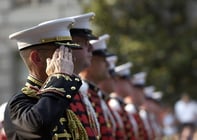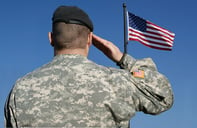Published on
Defining Terms: Understanding What Makes an Institution Military- and Veteran-Friendly

The terms military-friendly and veteran-friendly to describe a higher education institution (HEI) likely gained mainstream attention after the implementation of the Post-9/11 GI Bill in 2009. However, before the rollout of the Post-9/11 GI Bill, HEIs recognized the growing student servicemember population — mostly using military tuition assistance — as the military force increased in size to accommodate engagements in Afghanistan and Iraq. In 2008, at the Council of College and Military Educators’ annual meeting, then-voluntary education chief for the Coast Guard, Robert Bothel, challenged higher education officials to make “military-friendly” more than a slogan.[1] It may be the first modern account of a credible figure not only elevating the term military-friendly, but also providing thoughts around its definition.
The first academic publication devoted exclusively to the topic, “Creating a Veteran-Friendly Campus: Strategies for Transition and Success,” was published in the summer just before the Post-9/11 GI Bill’s rollout.[2] Around this time, media began to survey HEIs to gauge their level of support for veteran and military students. These surveys yielded lists that ranked the institutions according to their support of these students. Subsequently, some higher education groups published best practices guides to provide institutions with ways to support veterans and servicemembers on campus.
The federal government, while not explicitly having labeled their initiatives veteran-friendly or military-friendly, plays a key role in the evolution of the terms. In 2011, the Department of Defense published a memorandum of understanding for institutions to sign to be eligible to enroll servicemembers and accept military education benefits. The following year, President Obama issued Executive Order 13607, known as the Principles of Excellence, aimed at protecting and supporting veterans and servicemembers enrolled in postsecondary programs.
A recent review of media, higher education best practices guides and government guidelines and regulations shows that various initiatives have contributed to the current understanding of what constitutes a military-friendly or veteran-friendly institution.
To read the full white paper, “Defining Military-Friendly and Veteran-Friendly: Clarifying Ill-Defined Terms,” please click here.
– – – –
References
[1] Doug Lederman, “What Makes a College ‘Military Friendly’?” Inside Higher Ed, February 22, 2008. Accessed at http://www.insidehighered.com/news/2008/02/22/military#sthash.fqrfvFdF.DAdm0gEt.dpbs’
[2] Robert Ackerman and David DiRamio, ed., Creating a Veteran-Friendly Campus: Strategies for Transition and Success, no. 126 (San Francisco: Jossey-Bass, 2009).
Author Perspective: Association



